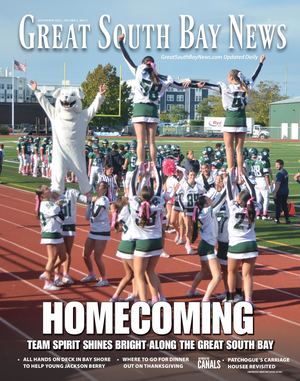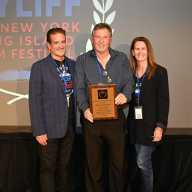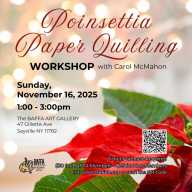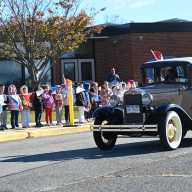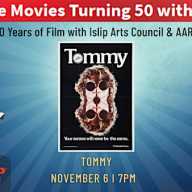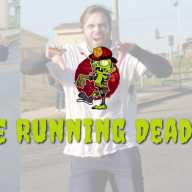Christopher Verga, an American history instructor at Suffolk Community College, a reporter with Schneps Media, and a Bay Shore resident, has authored several books previously reviewed in this publication. They include Saving Fire Island from Robert Moses, coauthored with Neil Buffett; and Cold War Long Island, coauthored with award-winning journalist Karl Grossman (also a frequent Schneps Media contributor), who provides the foreword to Verga’s new release, Nazis of Long Island.
The sea is a mysterious place, and when the tide rolls in, there’s no telling what it might bring. Consider a centuries-old whale skeleton that turned up on a Chilean shore—perhaps 1,000 bags of Doritos that washed up on a wave in North Carolina. Or… wrap your head around four Nazis on a rubber raft who showed up on Amagansett’s shore in 1947, claiming they were “a couple of fishermen from Southampton.”
Trained as spies by the Nazi high command for a commando-style raid on U.S. shores, the saboteurs arrived with $175,000 in cash ($3 million in today’s money) for payoffs, payouts, and other nefarious deeds. Their mission: to blow up power lines at select locations, cripple our energy grid, and create enough havoc and hysteria to help overthrow our government. But their intricate plot—which also involved American citizens—ran aground. All cohorts were captured, tried, and convicted.
And so begins Verga’s deep dive into the Nazis’ presence on Long Island—a detailed account of how the German American Bund spread antisemitic propaganda through rallies and summer youth camps to gain a foothold in the American mind.
Camp Siegfried in Yaphank was “…designed around the one in Nazi Germany. Young campers were taught Hitlerism, discipline and militarism to prepare them for… the coming American Reich.” Handed daggers, they were told to repeat, “When Jewish blood drips from the knife, then will the German people prosper.”
Thousands of New York area Nazi sympathizers sent their children there.
The author cites the strong presence of the Ku Klux Klan on Long Island and the local and county officials who embraced the Nazi ideology. Throw in the mistrust of “city values”; the Protocols of the Elders of Zion, a fictional book that detailed the Jewish conspiracy to take over the world; and “the growing belief that democracy was dead,” and you’ve got yourself an antisemitic stew at full boil. Or, as Verga titles chapter 11, a “Breeding Ground for an American Reich.”
Yet there was strong objection to the Nazi movement, and “the New York metro area became the center of Nazi resistance in America.”
In 1935, ten thousand anti-Nazi demonstrators marched down Eighth Avenue “during peak rush hour” demanding the U.S. pull out of the Olympic Games to be held in Germany. The U.S. did not withdraw, and in 1939, German American Bund leader Fritz Julius Kuhn headed a rally in Madison Square Garden promoting “Washington’s Birthday and Americanism.”
The link is ludicrous. But there it was: “The stage at the Garden… decorated with two thirty-foot posters of George Washington, and American flags were displayed on both sides of the stage. In between the American flags and the Washington posters, swastika banners were suspended from the ceiling. Standing at attention and around the stage were Hitler Youth Group members and SS.”
Before the rally, “anti-fascist groups… and concerned citizens alike” argued in letters and outrage for Mayor La Guardia to cancel the event. He did not. But the public outcry caused Governor Dewey to start probing into the Bund’s financial statements and “would become the smoking gun that would take down Kuhn.”
The dismantling of the Duquesne Spy Ring in 1941 also helped send the Nazis packing. Everett Roeder of Merrick, one of the highest-paid “embedded” spies in the network, worked at Sperry Gyroscope in Garden City. Having provided the enemy with “bombsights, long-range guns for planes and cutting-edge autopilot technology,” he was sentenced to 16 years in jail.
Kuhn and Roeder are long gone, along with the 33 other Duquesne Nazi agents who were tried and convicted of espionage. But if you follow the news these days, with frequent reports of antisemitism and racist hate crimes carried out in the name of truth, bigotry remains alive and well.
“There is no present or future—only the past happening over and over again—now,” Grossman quotes a Eugene O’Neill character of A Moon for the Misbegotten in the book’s foreword. He cautions: “If we are to avoid the horrendous, deadly events of less than a century ago, we need to learn fully about what happened then.”
The author provides photos (one of world-famous boxer Joe Louis as a prison guard at Camp Upton in Yaphank), cartoons, letters, and drawings.
Christopher Verga has written a book for our time.
